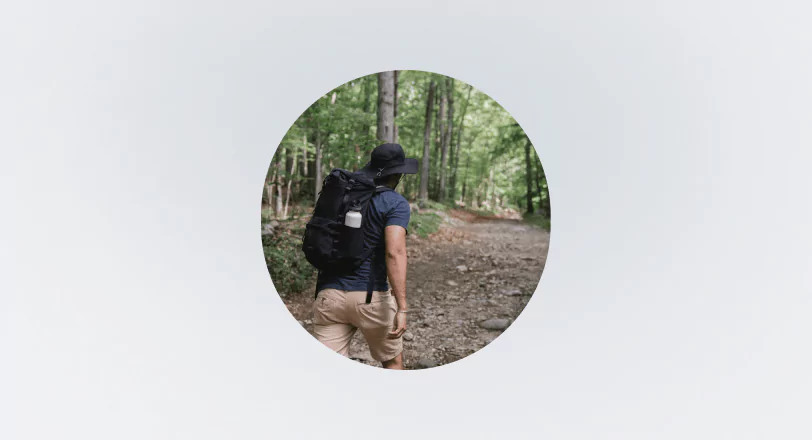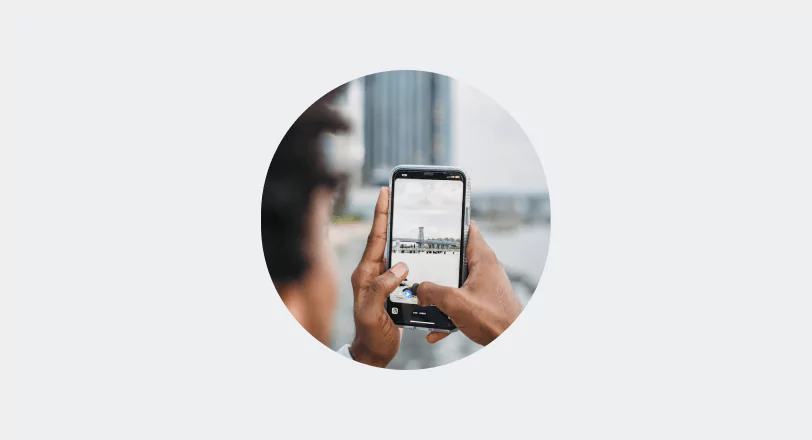You know your tourism business offers an amazing experience—so why aren’t more people booking? You’ve set up a website, posted on social media, maybe even run some ads, but the results are underwhelming. Instead of a flood of new customers, you’re stuck wondering what you’re doing wrong.
Here’s the truth: most new tourism marketers make the same mistakes—mistakes that can stall growth and waste precious time and money. The good news? Once you identify and fix these mistakes, you’ll start seeing real results.
In this article, you’ll learn the top five biggest mistakes new tourism marketers make—and how to avoid them. By the end, you’ll have a clearer path to attracting more bookings, improving your marketing strategy, and growing your business.
Let’s dive in.
Mistake #1: Ignoring SEO and Online Visibility

Imagine this: A traveler is planning their next getaway and searches for “best adventure tours in Colorado” or “top boutique hotels in Napa Valley.” If your business doesn’t show up in those search results, you’re losing potential customers before they even know you exist.
One of the biggest mistakes new tourism marketers make is ignoring Search Engine Optimization (SEO)—the process of improving your website’s ranking on Google and other search engines. Many assume that just having a website is enough, but without SEO, your site might as well be invisible.
Why SEO Is Critical for Tourism Businesses

- Most travelers start their search online. Whether they’re looking for accommodations, tours, or activities, the majority of people rely on search engines like Google to plan their trips. If your business isn’t ranking well, you’re missing out on a huge audience.
- People trust the top search results. Studies show that users tend to click on the first few results because they perceive them as more trustworthy. If your business isn’t near the top, you’re likely losing bookings to competitors.
- SEO has long-term benefits. Unlike paid advertising, which stops driving traffic once you stop paying, SEO continues to bring in visitors over time. A well-optimized website can generate bookings for months or even years.
How to Improve Your SEO and Get Found Online

- Use the right keywords. Think about what your ideal customers are searching for, such as “best hiking tours in Utah” or “family-friendly resorts in Florida.” Include these terms naturally throughout your website, especially in titles, descriptions, and blog content.
- Optimize your website for speed and mobile use. Travelers often browse on their phones, so a slow or hard-to-navigate site will drive them away. Google also ranks mobile-friendly sites higher.
- Claim and update your Google Business Profile. This is one of the easiest ways to improve your visibility in local searches. Add your business hours, photos, a description, and contact details to make it easy for customers to find and book with you.
- Encourage and respond to customer reviews. Google favors businesses with positive reviews, so ask happy customers to leave feedback on Google, TripAdvisor, or other relevant platforms. Responding to reviews—both positive and negative—also shows you care about customer experience.
- Create useful content. Blogging about travel tips, destination guides, or local attractions can help you rank for more search terms and attract travelers who are researching their trips.
- Build links from reputable sites. If a well-known travel blog or tourism website links to yours, Google sees your site as more trustworthy and ranks it higher. Collaborate with travel influencers or industry publications to get featured.
Ignoring SEO means leaving money on the table. By improving your online visibility, you’ll not only attract more visitors to your site but also convert them into paying customers.
Mistake #2: Poor Social Media Strategy

Social media is one of the most powerful tools for tourism marketing, but many businesses either ignore it, post randomly, or focus on the wrong platforms. Simply having an account and posting occasional photos won’t drive bookings. Without a strategy, your efforts can feel like shouting into the void—getting little to no engagement.
Common Social Media Mistakes in Tourism Marketing

- Posting inconsistently. Some businesses flood their feed with content one week, then disappear for a month. This makes your brand look unreliable and hurts engagement.
- Focusing on the wrong platforms. If your ideal customers are families looking for vacation ideas, you may get better results on Facebook than Twitter. If you run adventure tours targeting younger travelers, Instagram and TikTok are likely better choices.
- Ignoring engagement. Social media is about building relationships, not just broadcasting promotions. Many businesses fail to reply to comments, answer messages, or interact with followers.
- Only posting sales content. If every post is about discounts or “Book now!” messages, your audience will tune out. People want inspiration, helpful tips, and stories—not just advertisements.
- Low-quality visuals. Tourism is a highly visual industry. Blurry photos, poorly edited videos, or generic stock images won’t attract attention in a crowded social media space.
How to Use Social Media to Attract More Bookings

- Choose the right platforms. First, Facebook is great for reaching families and older travelers. Second, Instagram and TikTok are best for visually-driven content and younger audiences. Third, Pinterest works well for trip planning inspiration. Lastly, YouTube is powerful for destination and experience storytelling.
- Post consistently. Aim for a schedule you can maintain—whether it’s three times a week or daily. Consistency keeps your audience engaged and improves algorithm reach.
- Engage with your followers. Respond to comments and messages quickly. Like, share, and comment on posts from customers and industry partners to build relationships.
- Create high-quality content. Invest in good photography and video. Travelers want to see real, immersive visuals of your experience. Consider user-generated content from happy customers to build credibility.
- Tell stories, don’t just sell. Share behind-the-scenes moments, customer testimonials, travel tips, and destination highlights. Make your content valuable and engaging rather than overly promotional.
- Use hashtags and geotags wisely. Hashtags help people discover your content, and geotags (location tags) make your posts appear in local search results on platforms like Instagram and TikTok.
A strong social media plan helps you connect with travelers, build trust, and stay top-of-mind when they’re ready to book. Done right, it can turn casual browsers into loyal customers.
Mistake #3: Failing to Leverage Customer Reviews and Testimonials

In the tourism industry, trust is everything. Before booking a trip, travelers want reassurance that they’re making the right choice. That’s why customer reviews and testimonials are one of the most powerful marketing tools available.
Yet, many new tourism businesses fail to actively collect and showcase reviews—which can make potential customers hesitate. Even if you offer an incredible experience, a lack of social proof can cost you bookings.
Why Reviews and Testimonials Matter

- People trust other travelers. According to surveys, most consumers trust online reviews as much as personal recommendations. A glowing review can be the final push someone needs to book.
- More reviews improve visibility. Platforms like Google, TripAdvisor, and Yelp rank businesses with more reviews higher in search results, giving you greater exposure.
- They help overcome objections. A hesitant customer might worry about safety, quality, or reliability. Reviews from past guests can ease those concerns and build confidence.
How to Get More Reviews (and Use Them Effectively)

- Ask for reviews at the right time. The best moment to request a review is right after a positive experience—when excitement is high. Send a follow-up email or text after a guest’s tour or stay, thanking them and providing a direct link to leave a review.
- Make it easy. The fewer steps it takes to leave a review, the more likely customers will do it. Provide direct links to Google, TripAdvisor, or Facebook in your emails, receipts, and website.
- Respond to all reviews—good and bad. Engaging with positive reviews shows appreciation, while responding to negative ones demonstrates professionalism and a commitment to customer service. Always stay polite and constructive.
- Showcase testimonials on your website and social media. Don’t let great reviews go unnoticed. Feature them on your homepage, in promotional materials, and on social media posts. Videos of happy customers sharing their experiences can be especially powerful.
- Offer an incentive (ethically). While you can’t pay for reviews, you can encourage participation with small incentives, like entry into a giveaway or a discount on a future booking. Just make sure you’re following platform guidelines.
By actively collecting and promoting reviews, you build trust and credibility—making it easier for potential customers to choose you over competitors.
Mistake #4: Not Defining a Clear Target Audience

Many new tourism businesses make the mistake of trying to market to everyone. They assume that casting a wide net will bring in more customers, but in reality, a broad, unfocused marketing approach often leads to weak messaging that doesn’t connect with anyone.
For example, if you run a boutique eco-lodge in Costa Rica, your ideal customers might be environmentally conscious travelers looking for sustainable accommodations. But if your marketing is too generic—just saying "great hotel in Costa Rica"—you won’t stand out. The same applies to tour companies, travel agencies, and other tourism businesses. Without a clear target audience, your marketing lacks direction, and your message gets lost in the noise.
Why Defining Your Audience Matters

- Stronger marketing messages. When you know exactly who you’re targeting, you can craft messaging that speaks directly to their needs, interests, and pain points.
- Better return on investment (ROI). Whether you're investing in social media ads, content creation, or SEO, focusing on a specific audience ensures your budget is spent reaching the right people.
- Higher engagement and conversions. People are more likely to book when they feel like your offer is made just for them. A well-defined audience allows you to personalize marketing efforts and build stronger connections.
How to Identify and Target Your Ideal Customers

- Analyze your past customers. If you’ve already had some bookings, look for patterns. Where are your customers coming from? What demographics do they fall into? What feedback have they given about your services?
- Consider your unique selling points. What makes your business different? Do you cater to adventure travelers, luxury vacationers, budget backpackers, or families? Defining what makes you unique helps clarify who will benefit most from your offerings.
- Create detailed customer personas. A persona is a profile of your ideal customer, including their age, interests, income level, travel habits, and pain points. For example, instead of targeting "tourists," you might define your audience as "young professionals in their 30s who seek adventure travel experiences but prefer organized tours."
- Tailor your marketing channels. Different audiences use different platforms. If you're targeting honeymooners, Instagram and Pinterest might be your best bet. If you focus on corporate retreats, LinkedIn and professional networks might work better.
- Craft messaging that resonates. Instead of generic ads like "Book your dream vacation now," use language that speaks directly to your audience, such as "Luxury couples’ retreats in the heart of Napa Valley – a romantic escape like no other."
Defining your audience doesn’t mean excluding potential customers—it means making your marketing more precise and effective. By speaking directly to the right travelers, you’ll stand out from competitors and increase your chances of turning interest into actual bookings.
Mistake #5: Having a Weak Website and Booking Process

Your website is often the first impression travelers have of your business. If it’s slow, confusing, or outdated, potential customers will leave within seconds—often booking with a competitor instead.
Many new tourism businesses either underestimate the importance of a well-optimized website or overcomplicate the booking process. Some rely too much on social media and third-party platforms, assuming they don’t need a strong website. Others have a site but make it difficult for customers to book, leading to lost sales. If your website isn’t designed to convert visitors into paying customers, you’re missing out on a major revenue stream.
Common Website Mistakes That Hurt Bookings

- Slow loading times. Studies show that most people leave a website if it takes more than three seconds to load. A sluggish site frustrates users and negatively impacts your Google ranking.
- Not mobile-friendly. A large percentage of travelers browse and book trips from their phones. If your site isn’t mobile-optimized, you risk losing customers who find it difficult to navigate.
- Complicated or unclear booking process. If customers have to search for booking options, go through too many steps, or fill out lengthy forms, they’re more likely to give up and book elsewhere.
- Lack of trust signals. Without visible reviews, clear pricing, and secure payment options, potential customers may hesitate to book.
- Outdated design and poor navigation. A cluttered, unattractive, or difficult-to-navigate site makes your business look unprofessional and unreliable.
How to Improve Your Website and Increase Bookings

- Optimize for speed and mobile use. Use a modern, fast-loading website platform and ensure it works seamlessly on all devices. Tools like Google’s PageSpeed Insights can help you check and improve load times.
- Make booking effortless. Your “Book Now” button should be easy to find on every page. Reduce unnecessary steps and provide clear, simple instructions. A one-click booking option or a streamlined checkout process can significantly boost conversions.
- Use high-quality visuals. Professional photos and videos showcasing your experiences, accommodations, or tours help build excitement and trust. Travelers want to see what they’re booking.
- Display trust signals. Feature customer reviews, testimonials, industry certifications, and secure payment badges to reassure potential customers. If you offer a satisfaction guarantee or flexible cancellation policy, highlight it.
- Ensure clear pricing and policies. Avoid hidden fees or unclear cancellation policies. Transparency builds trust and reduces hesitations.
Your website is one of the most powerful tools for driving bookings. A fast, user-friendly, and visually appealing site with a seamless booking process can make all the difference in converting visitors into customers.
Conclusion
Marketing a tourism business can feel overwhelming, but avoiding these five common mistakes will save you time, money, and frustration. If travelers can’t find you on Google, they can’t book with you, so investing in SEO is essential.
A weak social media plan—posting inconsistently or ignoring engagement—won’t help either. Instead, focus on platforms where your audience spends time and interact with them regularly.
Customer reviews are one of the most powerful tools for building trust, yet many businesses fail to collect and showcase them. Travelers rely on feedback from others to make booking decisions, so actively encourage satisfied customers to leave reviews.
Another major mistake is trying to market to everyone. Defining your target audience allows you to craft messages that resonate and attract the right travelers.
Finally, your website and booking process should be simple, fast, and mobile-friendly. A slow or confusing site will drive potential customers away.
If your marketing efforts aren’t delivering results, take a step back and see if you’re making any of these mistakes. Small, strategic changes can make a big difference in increasing bookings and growing your tourism business.





